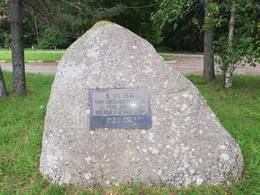Naikinimo batalionai II WW2, IV Sovietų okupacija
Naikinimo batalionai Estijoje buvo suformuoti sovietų okupacijos metais 1941 m. ir 1944–1954 m. kaip ginkluoti savanorių vidaus saugumo būriai.
Naikinimo batalionai buvo suformuoti po Vokietijos invazijos į Sovietų Sąjungą Vakarų Sovietų Sąjungos regionuose, kur buvo paskelbta karo padėtis. Vidaus reikalų liaudies komisariato (NKVD) 100–200 žmonių daliniai buvo įpareigoti palaikyti tvarką Raudonosios armijos užnugaryje ir slopinti bet kokius pasipriešinimo reiškinius 1939 ir 1940 m. aneksuotose žemėse. Pagrindinis jų dėmesys buvo skiriamas kovai su miško broliais ir „Omacorts“ žeme, taip pat sunaikinti strategiją, kuri gali būti naudinga. kad sovietų valdžia traukdamasi negalėjo evakuotis.
Naikinimo bataliono organizacija buvo atkurta 1944 m. balandžio 20 d. Estijos komunistų partijos Centro komiteto biuro dekretu. Šie batalionai sudarė vietinius savanorių būrius kiekvienoje apskrityje, kuriai buvo pavesta padėti saugumo institucijoms ir kariuomenei bei saugoti įvairias vietas. Savo klestėjimo laikais organizaciją sudarė apie 7000 narių, kurių dauguma buvo vietiniai. Nariai buvo blogai nusiteikę, buvo prastai apmokyti ir galiausiai nepasirodė kaip atsvara prieš miško brolius, kokios iš jų tikėjosi. 1944–1951 m. žuvo 173 naikinimo batalionų nariai, dauguma jų – susirėmimuose su miško broliais. 32 mirė atlikdami savo operacijas.
Estijos žmonės naikinimo batalionus pirmiausia prisimena dėl didelio civilių terorizavimo, laikydami juos bendradarbiais su miško broliais.
Susijusios vietos
Timmkanalo mūšio vieta
1941 m. liepos 4 d. „Miško broliai“ užpuolė vykdomąjį komitetą Hedemeeste. Grupei vadovavo Elmaras Toomingas, Metsapoole pradinės mokyklos direktorius ir Gynybos lygos Hedemeeste regioninio padalinio vadovas.
Liepos 6 d. atvyko Raudonosios armijos naikinimo batalionas: kai kurie jų žuvo, kiti buvo paimti į nelaisvę.
Liepos 7 d. jungtinės 400 Raudonosios armijos pėstininkų ir naikinimo batalionų pajėgos užpuolė vietos miliciją, kurią sudarė 60 vyrų. Gynėjai, padedami dviejų lengvųjų tankų, buvo nustumti į Timmkanalą, kur reorganizavosi ir vėl užėmė pozicijas.
Liepos 8 d. naikinimo batalionas sudegino 14 sodybų ir mokyklą Rannametsa kaime bei bažnyčią Võistėje. Tahkurannoje įvyko mūšis tarp žygiuojančių vokiečių ir iš Rannametsa paliekančio naikinimo bataliono, kuris neteko 57 vyrų, o aštuoni buvo paimti į nelaisvę. Kai kurie šaltiniai teigia, kad vokiečių dalinys buvo 402-asis dviratininkų batalionas, vadovaujamas majoro Ullerspergerio. Estijos ir vokiečių daliniai tą pačią popietę atvyko į Pernu. Mūšio vietą žymi granito riedulys, papuoštas juoda lentele su užrašu: „1941 m. liepos 8 d. Pernu naikinimo batalionas sudegino 18 namų ūkių ir mokyklą Rannametsa kaime“. Po teksto pateikiama Hando Runnelio eilėraščio citata.






